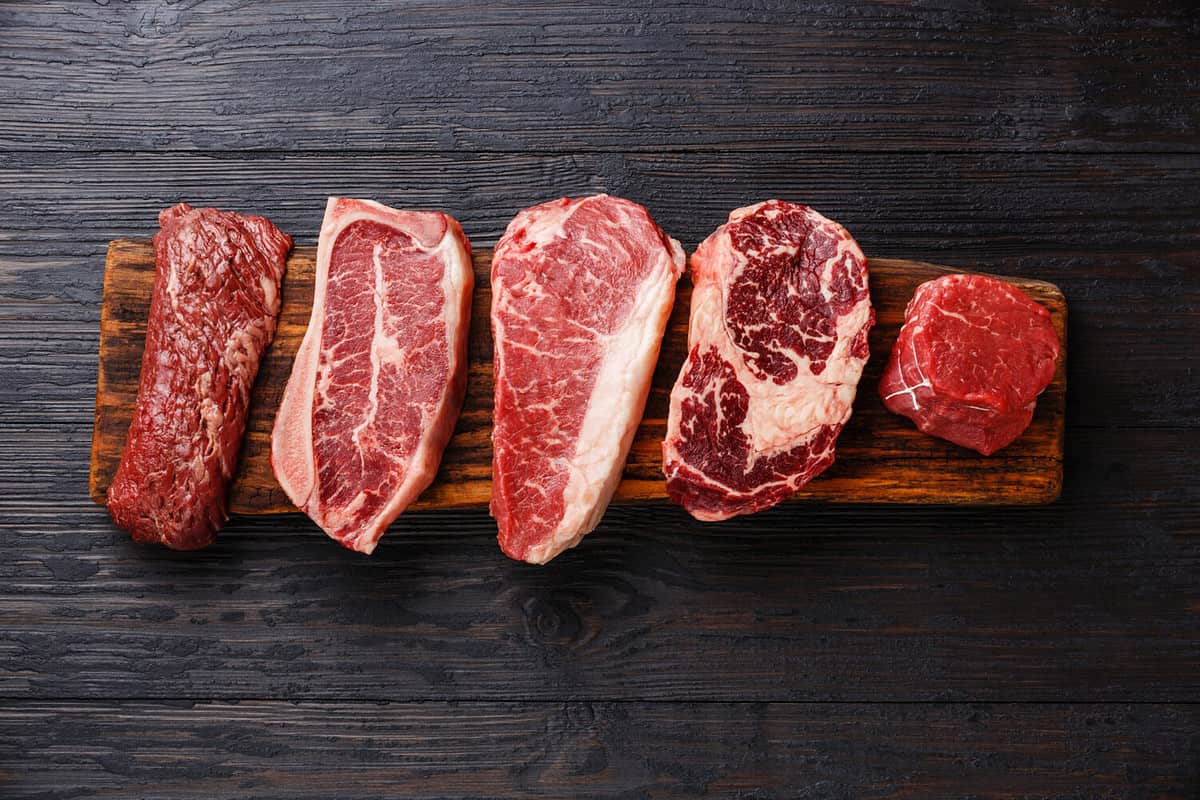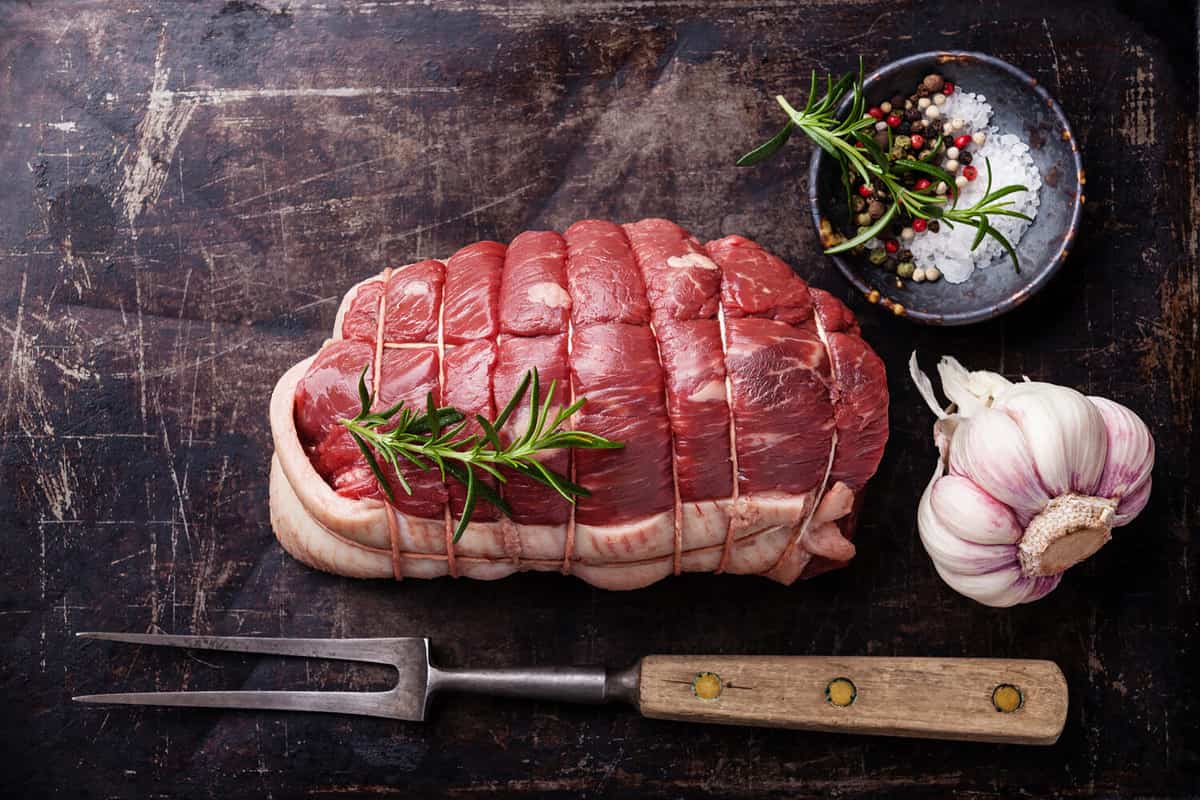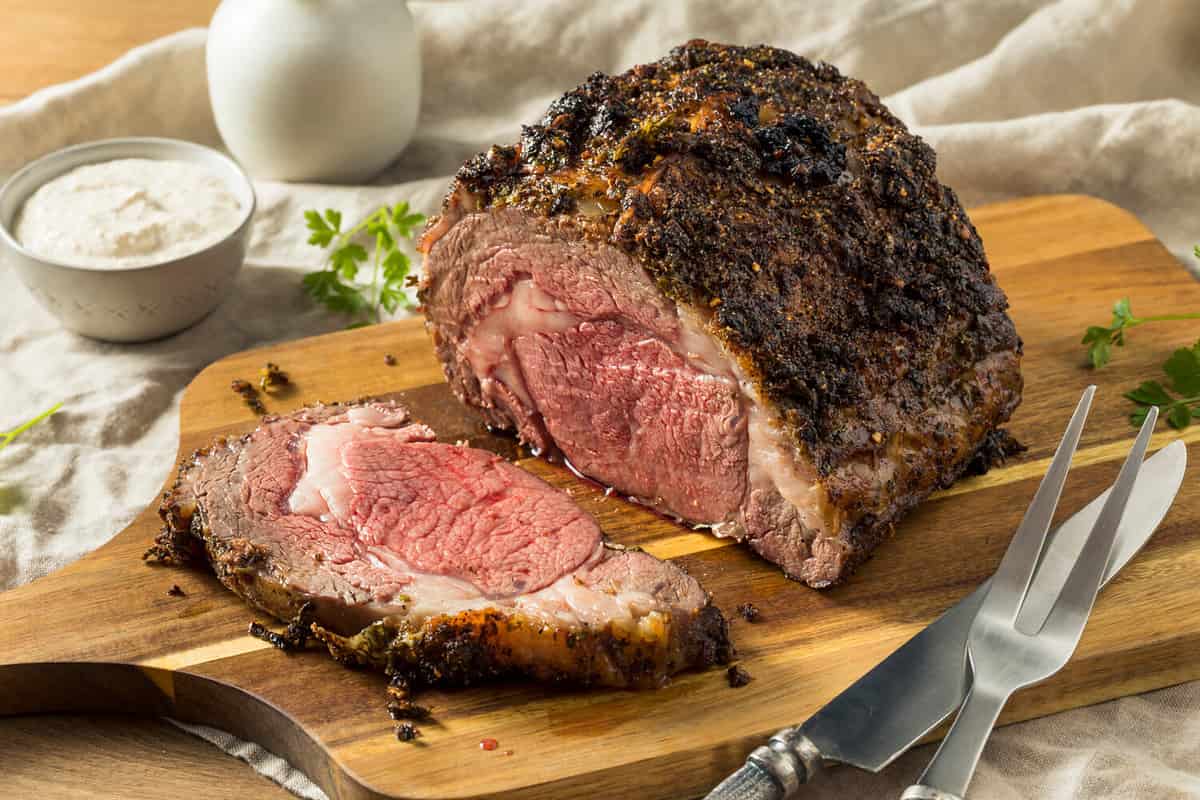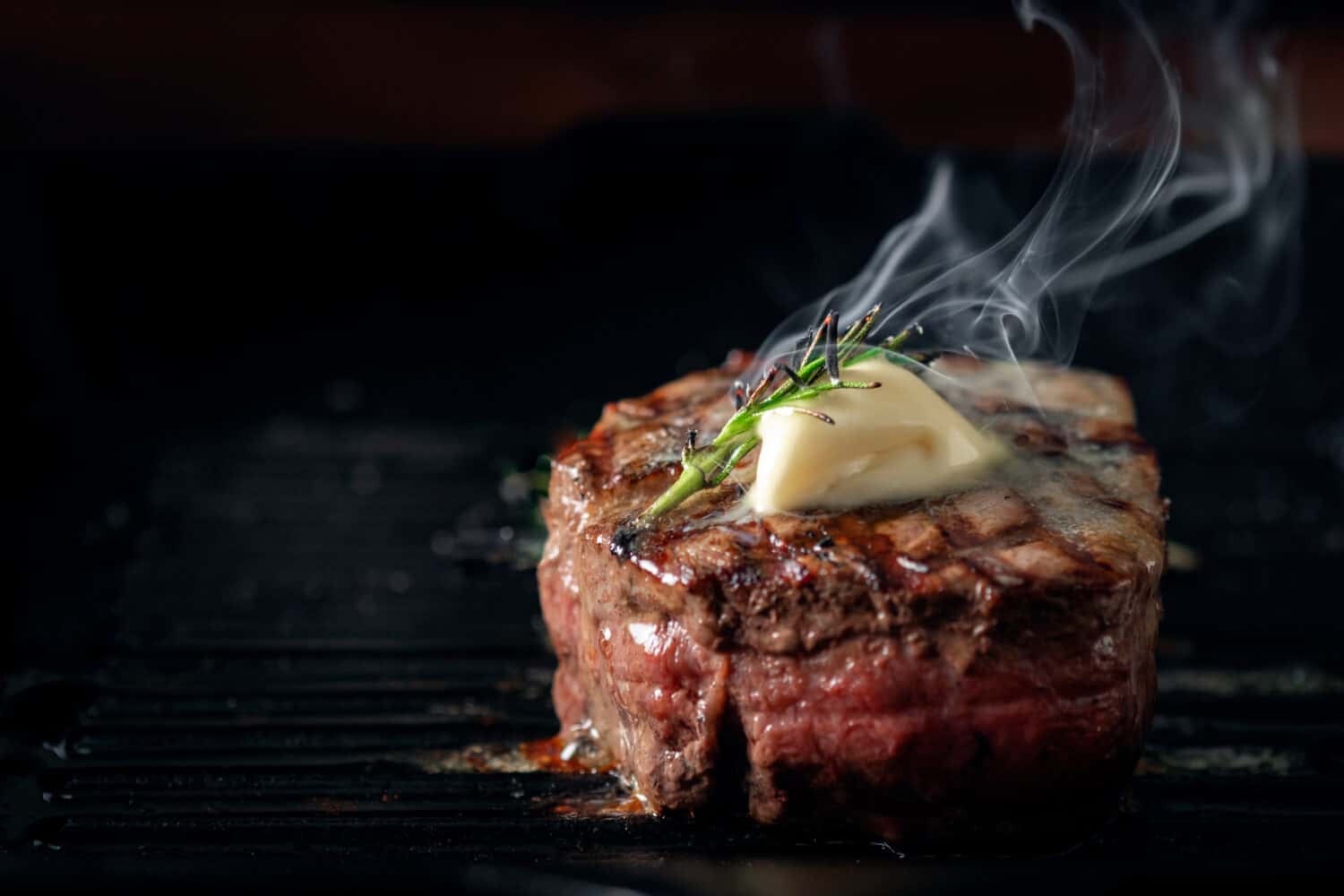You’ve seen the shield-shaped beef grade stickers at the meat counter, but what do they mean? The United States Department of Agriculture (USDA) developed a beef grading system that reveals the quality of the meat in each package. The USDA grading system also benefits ranchers and others who work in the beef industry because it helps ensure uniform standards. The agency created eight grade levels, but the top three are the most common in stores and restaurants: USDA Prime, USDA Choice, and USDA Select.
These standards measure beef for its tenderness, juiciness, and flavor. USDA Choice and USDA Prime beef differences are mainly in age and fat content. Prime grade provides the best beef-eating experience, followed closely by Choice. Select grade beef is generally lower in fat content but still high quality. Standard and Commercial grades of beef may be sold as store-brand meat or left ungraded. Utility, Cutter, and Canner grades are used to make processed meat products or ground beef.
There’s often a significant price difference between Prime and Choice grade beef. Keep reading to find out if buying a higher grade of meat is worth the cost.

Generous fat marbling is a sign of tender, flavorful beef.
©Natalia Lisovskaya/Shutterstock.com
USDA Beef Grading Process
Beef is graded at the slaughterhouse by a trained inspector who ranks meat according to its maturity and level of marbling (the flecks of fat distributed throughout the lean meat). Both of these are the primary factors in determining how tender a cut of meat is likely to be. Meat from younger cattle is usually more tender, and has better fat marbling.
All of the cuts from a single carcass usually receive the same grade. After the inspector grades the meat, the manufacturer must label it according to requirements set by the Food Safety and Inspection Service. Beef processing plants must comply with beef labeling laws to avoid fines of up to $10,000 and additional penalties. However, meat grading is optional, and meat producers who want it must pay for the service.
What is Prime beef?
USDA Prime beef is of the highest quality. It has generous fat marbling and comes from younger cattle. It is extremely tender, juicy and flavorful. Prime cuts are the best to use with dry-heat cooking methods including grilling, roasting, broiling, and baking. The tenderest cuts of Prime beef include rib-eye, tenderloin, T-bones, strip steaks, and porterhouses.
Only around 3% of all graded beef receives a Prime rating. It can be difficult to find Prime beef in ordinary grocery stores. Most U.S. Prime beef is reserved for high-end restaurants, but you can buy it online through companies like Omaha Steaks and Snake River Farms.

Choice rump roast is tender and flavorful when roasted with garlic and herbs.
©Natalia Lisovskaya/Shutterstock.com
What is Choice beef?
USDA Choice beef is the second-highest quality grade and easy to find at your local supermarket. Around 50% of all graded beef receives a Choice rating. This beef has enough fat marbling to keep it juicy during grilling or roasting, resulting in a flavorful eating experience.
- The must-have convenient reference guide for every home cook!
- Includes more than 8,000 substitutions for ingredients, cookware, and techniques.
- Save time and money on by avoiding trips to grab that "missing" ingredient you don't really need.
Choice grade beef is more economical than Prime grade and works in almost any recipe. Choice beef is equally delicious cooked with dry heat or moist heat. The best Choice cuts come from the rib and loin sections.
Differences Between Prime and Choice Beef
| Prime Beef | Choice Beef |
|---|---|
| Only 3% of all graded beef | About 50% of all graded beef |
| Cut from younger cattle | Cut from more mature cattle |
| Generous fat marbling | Good fat marbling |
| Expensive and harder to find | More affordable and readily available |
| Best for grilling or roasting | Excellent in most beef recipes |

Although prime rib is known as a tender cut, it can be a grade other than USDA Prime.
©Brent Hofacker/Shutterstock.com
Is it worth paying more for higher grades of beef?
It’s worth paying for the highest quality beef you can afford, especially if you cook using dry-heat methods like grilling or roasting. There’s no way to replicate the tenderness and juiciness that results from the natural marbling in a Prime grade steak.
Because the price difference can be extreme, most people save Prime beef purchases for special occasions. Indeed, it would be a waste of good marbling to hide Prime beef in a stew or slow cooker recipe. For most everyday beef recipes, Choice grade is high enough quality to provide excellent results.
Standard grade beef is a great way to save money on beef for moist-heat cooking methods, like soups and stews. These may or may not have a Standard label, as stores are allowed to label them as store-brand or leave them ungraded. You can tell they lack the marbling that’s evident on more expensive cuts, so it’s best to use them in slow-cooked recipes. Grilling Standard grade beef will result in tough, dry meat.
Up Next
Beef Tenderloin vs. Filet Mignon: Key Differences and Which Steak is Best For You
Ground Chuck vs. Ground Beef: Taste Differences & Nutritional Comparison
Pork vs. Beef: The Difference Between Two Of The Most Popular Meats
- The must-have convenient reference guide for every home cook!
- Includes more than 8,000 substitutions for ingredients, cookware, and techniques.
- Save time and money on by avoiding trips to grab that "missing" ingredient you don't really need.
The image featured at the top of this post is ©Andrei Iakhniuk/Shutterstock.com

